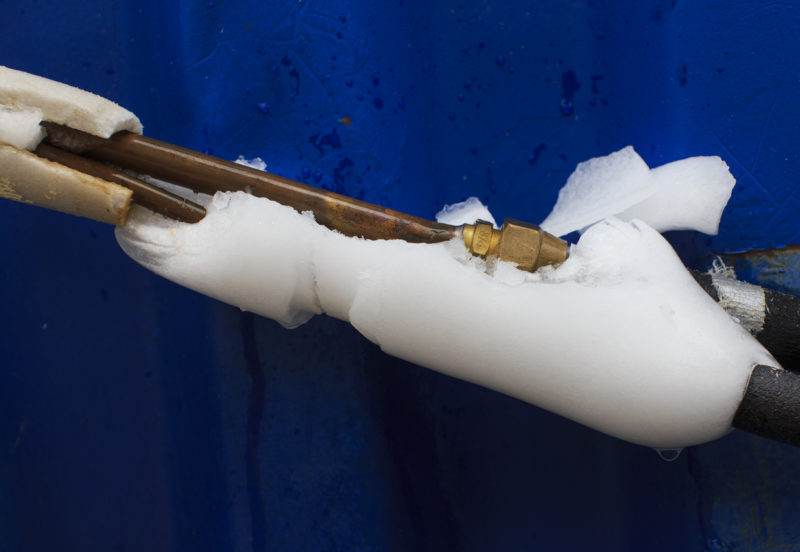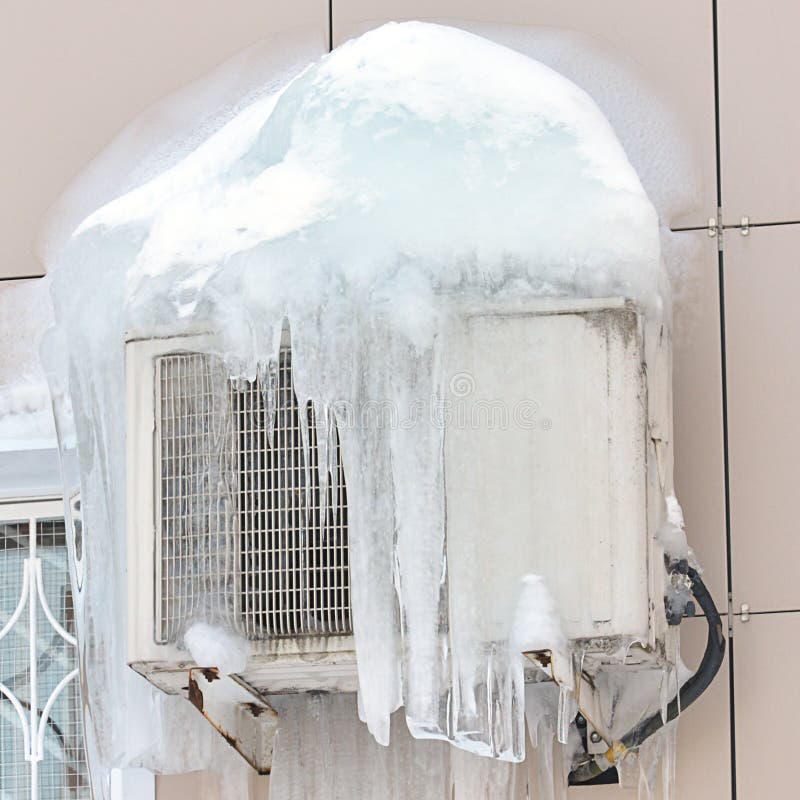Ways to Manage a Frozen AC Pipe: Specialist Guidance
Ways to Manage a Frozen AC Pipe: Specialist Guidance
Blog Article
Have you been searching for help Why Is Ice On My Outside Air Conditione?

Intro
Discovering that your air conditioning pipe is frozen can be worrying, especially during warm summertime when you rely upon your air conditioning unit the most. Understanding what to do in such a circumstance is vital to prevent more damage to your cooling system and ensure your comfort inside your home.
Comprehending the Causes
A number of aspects can contribute to the freezing of an air conditioning pipe. Understanding these reasons can aid you attend to the problem efficiently.
Lack of Airflow
One usual source of a frozen AC pipeline is inadequate air flow. When the airflow over the evaporator coil is limited, it can trigger the coil to go down below freezing temperature level, leading to ice development on the pipe.
Reduced Refrigerant Levels
Insufficient cooling agent degrees in your air conditioning system can additionally lead to an icy pipeline. Low cooling agent degrees can cause the stress in the system to go down, leading to the freezing of dampness on the evaporator coil.
Winter Conditions
In colder climates, freezing temperature levels outside can add to the freezing of air conditioning pipelines. If your air conditioner device is not properly shielded or if there are leaks in the ductwork, chilly air can penetrate the system, creating the pipe to ice up.
Dirty Air Filters
Filthy or clogged air filters can limit air movement in your a/c system, resulting in numerous concerns, consisting of a frozen pipe. It's essential to change or cleanse your air filters frequently to guarantee proper air movement and avoid ice buildup.
Indicators of a Frozen Air Conditioning Pipe
Recognizing the indications of a frozen a/c pipe is essential for punctual action.
Lowered Airflow
If you discover a substantial decrease in air flow from your vents, it can indicate a frozen pipeline.
Ice Buildup on the Pipe
Noticeable ice buildup on the refrigerant line or the evaporator coil is a clear sign of an icy AC pipe.
Unusual Sounds from the Unit
Uncommon noises, such as hissing or gurgling, originating from your air conditioner unit can signal that there's ice present on the pipe.
Immediate Actions to Take
When faced with an icy air conditioner pipeline, it's essential to act promptly to avoid additional damages to your air conditioning system.
Turning off the a/c
The first step is to turn off your ac system to avoid the system from running and intensifying the problem.
Looking for Blockages
Examine the area around the indoor unit for any type of obstructions that might be obstructing air flow, such as furniture or curtains.
Thawing the Pipe
You can utilize gentle approaches like putting towels taken in warm water around the icy pipe to assist thaw it gradually.
Preventive Measures
Taking safety nets can aid avoid future incidents of an icy AC pipe.
Normal Maintenance Checks
Set up regular maintenance contact a professional HVAC specialist to make sure that your a/c system is running successfully.
Transforming Air Filters
Regularly replace or cleanse your air filters to stop air movement constraints and keep ideal performance.
Shielding Exposed Pipes
If your air conditioner pipelines are subjected to cool temperature levels, think about insulating them to stop freezing throughout cold weather.
Seeking Professional Help
If DIY methods fall short to fix the concern or if you're not sure concerning how to continue, it's ideal to look for assistance from a qualified HVAC technician.
When DIY Methods Fail
If your attempts to thaw the pipeline or address other problems are not successful, it's time to contact a professional.
Relevance of Hiring a Professional HVAC Technician
A certified HVAC service technician has the knowledge and devices essential to identify and fix issues with your a/c system securely and effectively.
Final thought
Managing an icy AC pipe can be a discouraging experience, yet knowing how to respond can help minimize damage and restore comfort to your home. By understanding the reasons, identifying the indicators, and taking punctual activity, you can successfully attend to the problem and avoid future occurrences.
Frozen AC Line: Why It Happens & What To Do About It
A frozen AC line can be a rather peculiar sight in a place like Phoenix, Arizona where nothing ever freezes. In this post, we’ll discuss what makes an air conditioner line frozen – and what you can do about it.
Dirty Air Filters
Did you know that you should be cleaning or replacing your air filters on a monthly basis? Failing to do this can result in airflow issues that, in turn, cause your evaporator coils and lines to freeze over. You’ll notice a buildup of ice on both components, although the buildup on your pipes will, of course, be more evident unless you open your air condition up to reveal the coils.
What To Do About It
Give your air filter a good cleaning if it’s reusable. If not, replace the filter outright. Next, switch your air conditioner’s fan setting on and leave it there for 2-3 hours. This will draw warm air in, helping to thaw your evaporator coil. You can also check out this article for some tips on cleaning the coils themselves if you’d like to speed the process up. Before you switch the unit back to its normal state, make sure the supply vents are completely unobstructed and free of dust or other debris.
If you keep having this issue even after replacing your filters regularly, contact a local HVAC repair company and have them inspect your evaporator coil, ductwork, and any other components that may be at fault. If you live in the Phoenix, Arizona area, give American Home Water and Air a call.
Low Refrigerant Levels/Leakage
What To Do About It
Contrary to what air conditioner “recharge” companies often tell their clients about refrigerant, it should never need to be simply refilled. You see, refrigerant runs in what experts refer to as a “closed loop.” Refrigerant really shouldn’t be leaving that loop. If it is, you’ve got a leak.
Paying someone to come and pump more refrigerant into your system (aka “recharge” it) isn’t the solution. Doing that will simply kick the can down the road. Besides, refrigerant leaks can be harmful to the environment and people in your home.
Rather, you need to take care of the leak with the help of a technician. Check out this article for some more information about dealing with air conditioners that are leaking refrigerant. Before you contact a technician, switch your thermostat to the off position. Then, switch the fan setting on and let it run for 2-3 hours so the unit can thaw.
Improper Temperature Setting
Improper temperature settings can also cause a drop in your air conditioner’s pressure. What many people don’t realize is that air conditioners are actually designed to run when temperatures have fallen above roughly 60 degrees Fahrenheit. If you run the unit when it’s cold outside, you’ll run into many issues, including frozen components.

Hopefully you enjoyed reading our article on Have a Frozen AC Line? Here’s How to Fix It. Thank you for spending some time to browse our blog post. Feel free to take the time to distribute this entry if you enjoyed reading it. Thanks a lot for your time spent reading it.
About This Report this page